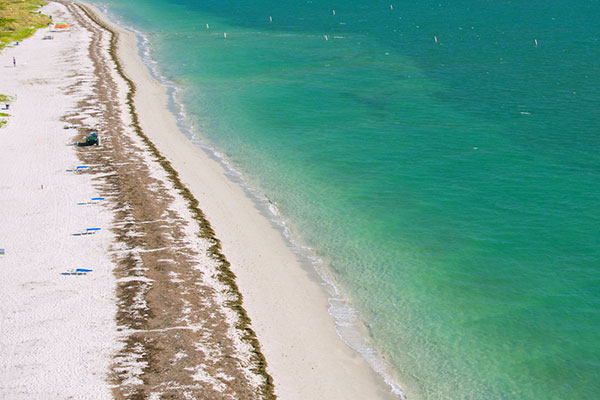The Wrack Line Is Full of Treasures!
Key News ContributorDecember 9, 2018

The Wrack Line
Although you may not be familiar with this term, I’m sure you’ve searched through and near it looking for whatever “beach treasures” enticed you. Wrack lines are linear piles of marine debris (both natural and manmade) that get washed up on the beach from incoming waves and tides. Typical debris includes uprooted seagrasses, algae, seeds, mangrove leaves and propagules, along with sponges, soft corals, shells, egg cases, and worm tubes.
Unfortunately, the wrack line is also often a reminder that human-based marine debris has become a common site in the marine environment; plastics, fishing gear, cigarette butts, and drift wood are common finds. Regardless, the wrack line is an important part of the beach ecosystem. The size and duration of the wrack line can vary depending on storm activity, winds, and tide conditions. Once established, the wrack line provides shelter for a variety of animals such as insects, crabs, and amphipods thus making it a vital component of the coastal ecosystem.
In addition, wrack lines serve as a food source for a variety of animals including shorebirds and raccoons. The organic material within the wrack line also provides critical nutrients to dune vegetation, and helps to stabilize shifting beach sands so new dunes can form. In many coastal communities, the wrack line is raked and removed to provide a more “aesthetic” beach scene for tourists and residents, but local environmental authorities work hard to keep Key Biscayne’s wrack lines intact.
Despite seasonally heavy use by park visitors, the beach dune along Key Biscayne, especially Cape Florida, overall is in good condition. Because the beach sand is not mechanically raked and because the wrack lines are left intact, beach dune plants can usually spread and thrive and new species such as the imperiled burrowing four-o’clock can colonize the site.
General Conservation Measures
In order to keep the beach dune in a healthy condition, it is imperative to keep the wrack line intact. People, vehicles and recreational equipment need to be kept off and away from the vegetation; wrack lines need to be left in place; litter and trash need to be picked up by hand; vehicles driven on the beach should be low-impact and used minimally; and occasionally occurring invasive exotic plants need to be removed.


